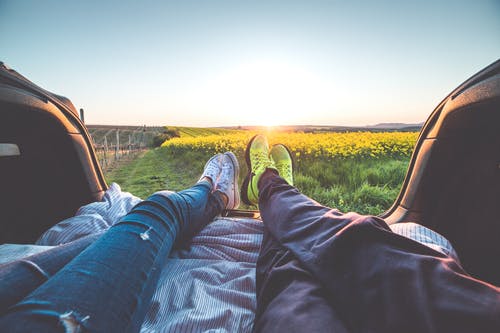Developing the Discipline of Doing Nothing

As the country slowly reopens, we are all tired of working from home, business closures, and being cooped up with nothing to do. So, it might seem strange that I’m challenging you to develop the discipline—of doing nothing. What am I talking about?
Since we all will soon return to the rat race, with all of its demands and deadlines, developing the discipline of doing nothing is learning how to “insert pauses” into your day. Many years ago, a leading soft drink company ran a brilliant advertising campaign that pitched their cola as, “The Pause That Refreshes.” They were on to something. Pauses refresh us because they allow us to stop, refocus, and rest.
For years, I have intentionally inserted pauses into my day. Some pauses are only a few minutes long, others hours. It may be a long walk to a copier at work instead of the one in my department. Or, driving an alternate route home. Or, a day at the beach. The idea is to relax, rejuvenate, and rest by diverting your thoughts from what stresses you to what refreshes you.
“You cannot pour from an empty cup.”
Author Unknown
Rest replenishes us. And we rest by, well, doing nothing. Sandy Gingras talks about the value of rest in her book titled, How to Live at the Beach. I love this little book. This light-hearted five-minute read is a metaphor that conjures up images of the mentality we have when we’re at the beach—and why we need to transport this beach mentality to our non-beach lives.
Think about it. When we go to the beach we live in a state of simplicity. Gingras says,
“Of minnows and Sno-cones,
and how the wind blows,
flip flops and hammocks,
and we don’t look at clocks.
Crack the crabs,
a roll in the sand,
preserve the wetlands,
corn-on-the-cob,
the fish that got robbed,
forget about the job.
At the beach, treasure is what we find, not what we buy.”
The beach is where we naturally reduce speed, forget about the complexity of the world—and our world. Gingras says when we learn how to live at the beach in our daily lives, we “remember how filling a day of nothing can be.” The beach may be the only place where we “return to our child-like selves.” To me, a beach represents a pause—and a simpler life. How do we bring a beach mentality—and all of its benefits—back home with us? Perhaps by appreciating what surrounds us—on a deeper level.
During this time of “country closure” (and doing nothing), I’ve noticed what I typically fail to notice, some of which is in my own backyard: the graceful arc of a hawk, the song of the Cardinal, Red-Winged Blackbird, Blue Jay, Robin, Killdeer, the power and precision of the Red-Headed Woodpecker, the wobbly legs of a newborn fawn, the majesty of a doe up close, the species of flowers sprawled before me, the way a gentle breeze whispers between tree leaves and sounds like rain, the curl of a wave just before it breaks for shore. I notice more when I “invest the time” to do nothing. Who says doing nothing is boring? Doing nothing calms us, recalibrates us, and enlightens us.
For me, I’ve realized that by pausing more, I’ve seen more, listened more, heard more, and felt more. And pausing is a discipline all its own. Ever notice how it’s more difficult to slow down than speed up?
When your personal rat race resumes, don’t forget to slow down and insert a pause into your day.
When you develop the discipline of doing nothing,
a life of clarity, simplicity, and rest awaits.
###
Please feel free to ask me a question, leave a comment, or join my mailing list by subscribing to my FREE newsletter, PAUSE MORE. RUSH LESS. below. We'll talk about how to slow down your life to live it more fully.

